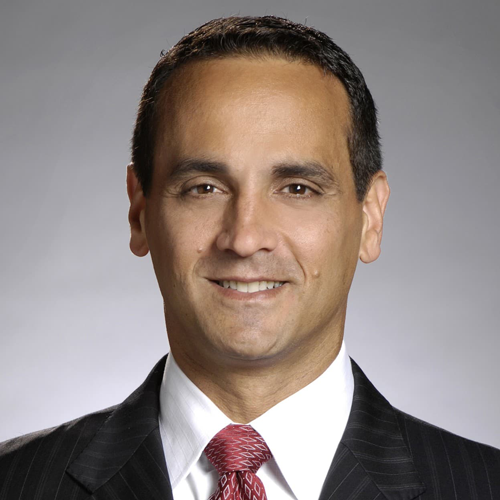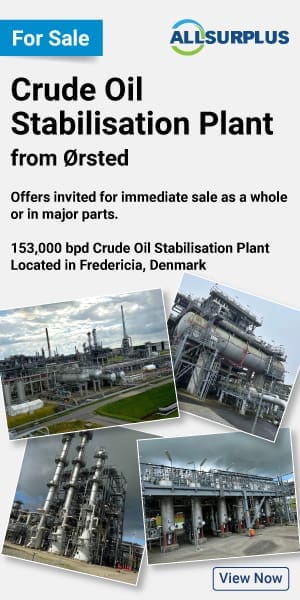As federal approvals continue to open opportunities for commercial offshore wind projects, the earliest approved projects are now coming online. In early 2024, Vineyard Wind 1, located just 14 miles off the coast of Martha’s Vineyard, began sending electricity to the grid. The site is generating 68 megawatts (MW), which powers 30,000 Massachusetts homes via five GE Haliade-X turbines.
A joint venture between Avangrid, Inc. and Copenhagen Infrastructure Partners (CIP) through their affiliate Vineyard Offshore, construction on Vineyard Wind 1 began in late 2022, with steel-in-the-water by June 2023. The project included the completion of the first offshore substation in July 2023. More than 3.3 million people are served by the eight electric and natural gas utilities owned and run by Avangrid, a part of the Iberdrola Group, in New York and New England.
Vineyard Wind 1 is the first phase of a larger project now named New England Wind, previously known as Vineyard Wind South. When the entire project is completed, more than 400,000 homes and businesses across Massachusetts will be powered by offshore turbines.

According to a statement issued by Massachusetts Governor Maura Healey and Lt. Governor Kim Driscoll, the total 806-megawatt project is projected to generate $1.4 billion in the cost of energy savings and reduce carbon emissions by over 1.6 million metric tons each year, an amount equal to reducing vehicle traffic by 325,000 yearly.

“The Vineyard Wind 1 project marks a monumental milestone in our nation’s journey towards sustainable energy,” says Joe Curtatone, the president of the Northeast Clean Energy Council (NECEC), in a statement. “With its 806-megawatt capacity, Vineyard Wind will energize over 400,000 homes and businesses and invigorate our economy, creating thousands of jobs in the climate economy and saving customers billions in energy costs.”

“Moreover, its substantial carbon emissions reduction will leave a lasting legacy of environmental stewardship and the transformative potential of clean energy, driving us towards a brighter, greener future for generations to come,” Curtatone adds.
While celebrations of bringing Vineyard Wind 1 online have taken place, it hasn’t been without challenges. The project has faced multiple lawsuits, including one from an association of Nantucket residents who alleged that various agencies failed to conduct sufficient environmental reviews. The lawsuit claims that the project broke the Endangered Species Act, and that construction would threaten the critically endangered North Atlantic right whale. As of late April 2024, two lawsuits were dismissed, and the federal court rejected appeals.
Pushback on commercial-scale wind projects, broken contracts, and canceled wind farms are creating strong headwinds to advancing wind projects and achieving President Joe Biden’s climate agenda, which aims to complete environmental reviews for 16 projects by the end of 2024, according to a 2021 executive order.
Across the country, opposition to renewable energy projects has led to bans, moratoriums and other restrictions, making the transition to renewable energy sources complex and contentious in some parts of the U.S. A massive wind farm project that includes 100 wind turbines off the coast of New Jersey’s resort towns Ocean City and Atlantic City is laden with controversy. The project would generate energy to power 500,000 homes in the area but is now facing lawsuits to stop its installation.
According to the Oceantic Network U.S. Wind Quarterly Market Report published in the first quarter of 2024, the installation of offshore wind projects has increased across the United States. Last year, 42 MW were installed compared to 242 MW, with approximately 4,000 MW in progress. Ten GW have received approval for construction in the United States, with three projects approved and construction pending, three under construction, and one complete.
The Biden-Harris administration has been a big supporter of commercial-scale offshore wind projects to accelerate the construction of renewable energy sources. In April 2024, the U.S. Department of Interior announced the approval of the country’s eighth offshore wind project.
Since 2021, the administration has conducted four auctions for offshore leases, opening up 1,074,039 acres and generating $5.45 billion in revenue for the U.S. Treasury, according to the Oceantic Network U.S. Wind Quarterly Market Report published in the first quarter of 2024. Three more auctions slated for 2024 will open new projects on three coasts: the Oregon coast, the Gulf of Maine, and a second in the Gulf of Mexico.
On its website, the American Clean Power Association states, “There are more than 35,000 megawatts (MW) of offshore wind potential under development on the East Coast, and there is room for further development.” The South Fork Wind project by Ørsted, a Danish energy developer, and Eversource, a utility company, flipped on the switch to send energy from its 12-turbine wind farm about 35 miles east of Montauk Point, New York.
Last year, in an interview for an Energies article, Sam Salustro, The Business Network for Offshore Wind’s vice president of strategic communication, noted that the supply chain was a significant challenge facing the offshore wind industry. He added that the U.S. must build a robust and deep domestic supply chain capable of achieving national and state offshore wind targets, which will play a critical role in the energy transition.
Supply chain elements – including manufacturing facilities, ports, vessels and even university programs – remain constrained worldwide as the demand for offshore wind grows exponentially. Significant investments are being made in building a more robust supply chain.
For example, U.S. Forged Rings announced a new $700 million tower and forge facility for the East Coast in addition to manufacturing facilities in New Jersey, Albany, New York, Providence and Boston, according to the Oceantic Network U.S. Q1 Market Report. Since 2023, six new crew transportation vessels (CTVs) have been launched based on data in the same report. Experts predict that 2024 will allow for greater progress citing lower interest rates and greater interest from state leaders interested in wind to meet climate targets.
As the first two commercial-scale offshore wind farms in the United States power up, offshore wind advocates see the renewable energy source’s potential to drive economic growth, reduce carbon emissions, and create a more resilient energy system.
For more information, visit www.vineyardwind.com.
Headline photo: One of the first completed turbines of the Vineyard Wind project, an 800 megawatt wind farm near Martha’s Vineyard. Photos courtesy of Vineyard Wind.
Katie Navarra is a non-fiction writer. Her byline has appeared in Popular Science, The Motley Fool, Education Dive, ChemMatters, Society of Human Resources Management, Western Horseman Magazine and Working Ranch, among others.





